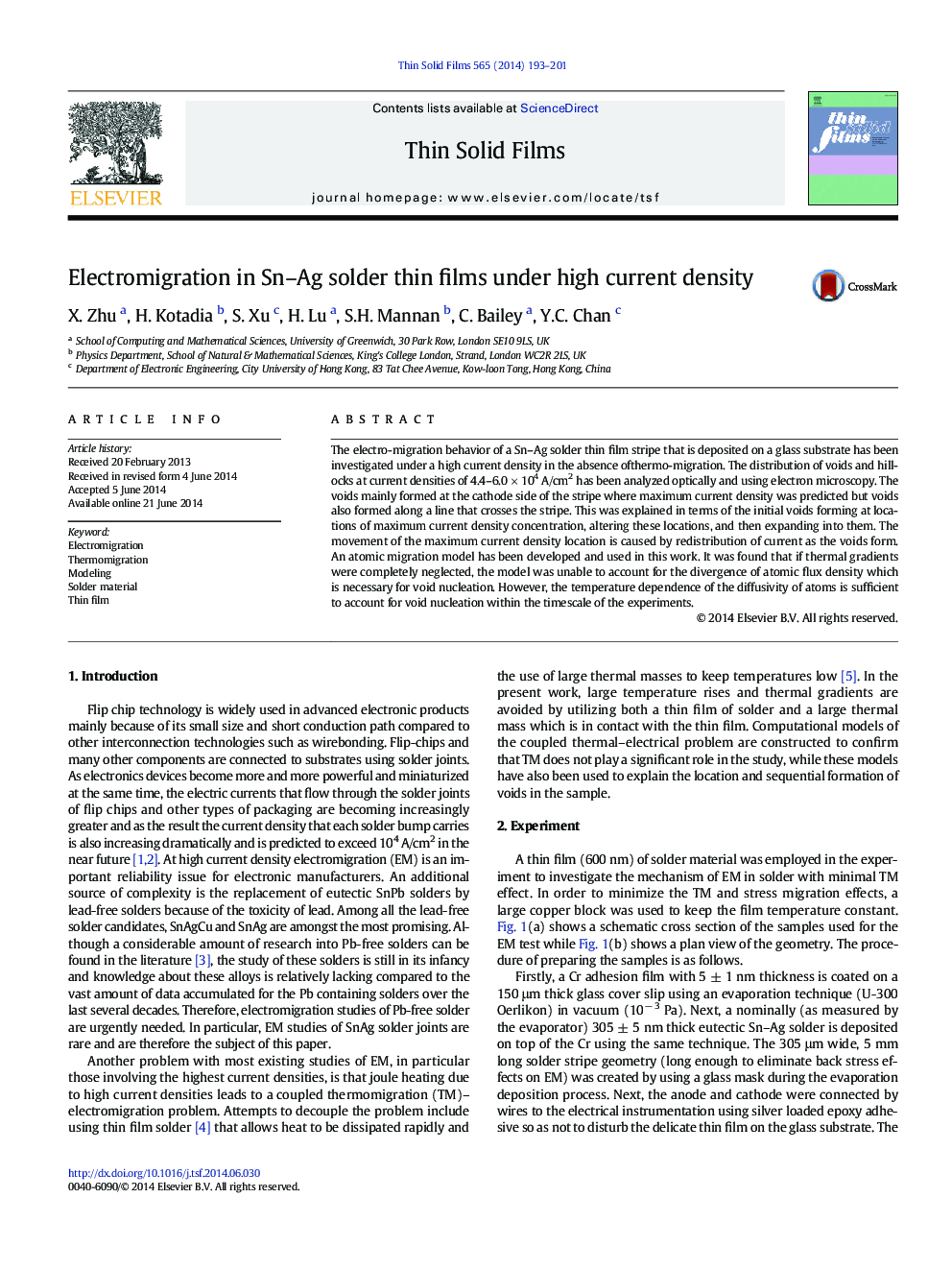| Article ID | Journal | Published Year | Pages | File Type |
|---|---|---|---|---|
| 1665302 | Thin Solid Films | 2014 | 9 Pages |
•Experimental and computational study of electron migration in a SnAg film•The calculated atomic flux divergence has been used to predict void formation.•Voids caused by electromigration observed at current crowding sites and in other regions
The electro-migration behavior of a Sn–Ag solder thin film stripe that is deposited on a glass substrate has been investigated under a high current density in the absence ofthermo-migration. The distribution of voids and hillocks at current densities of 4.4–6.0 × 104 A/cm2 has been analyzed optically and using electron microscopy. The voids mainly formed at the cathode side of the stripe where maximum current density was predicted but voids also formed along a line that crosses the stripe. This was explained in terms of the initial voids forming at locations of maximum current density concentration, altering these locations, and then expanding into them. The movement of the maximum current density location is caused by redistribution of current as the voids form. An atomic migration model has been developed and used in this work. It was found that if thermal gradients were completely neglected, the model was unable to account for the divergence of atomic flux density which is necessary for void nucleation. However, the temperature dependence of the diffusivity of atoms is sufficient to account for void nucleation within the timescale of the experiments.
